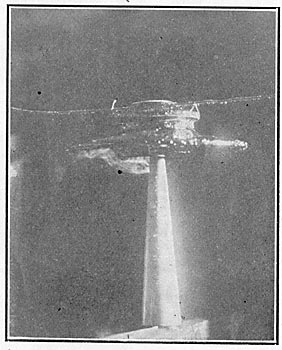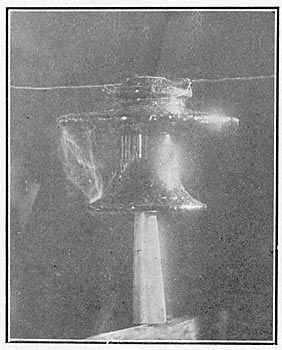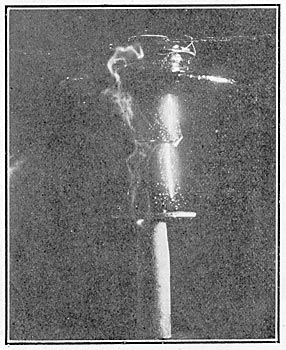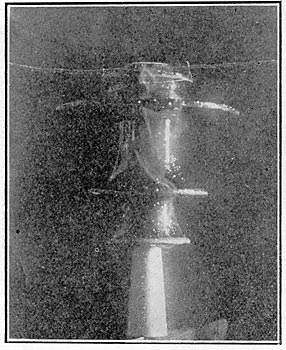[Trade Journal]
Publication: American Electrician
New York, NY, United States
vol. 16, no. 4, p. 207, col. 1-3
HIGH-TENSION INSULATOR TESTS.
The accompanying illustrations show the results of some interesting tests made by The R. Thomas & Sons Company, of East Liverpool, Ohio, on their No. 14 C-T insulators. These are of brown glazed porcelain made from English china clay and are glaze-filled; the individual parts being dried separately in an oven by a process known as "biscuit firing," dipped in glazing material, fitted in each other, put in a sagger petticoat uppermost and placed in a kiln. The petticoats are thus welded together by seams of glass-like glaze, which, it is claimed, are stronger than any of the other parts of the insulator. For the purpose of determining the potentials that arc over them, the insulators were mounted on tin-covered wooden pins. Current was supplied by a 150-kw. testing set, the requisite potential being obtained by means of a step-up transformer. No dry test was made, as this is of little value, since the potential at which the arc jumps from the head to the pin can be predetermined by measuring the shortest distance between them and referring to a curve of arcing distances in air. In the wet arcing test a stream of water from a sprinkling nozzle was played on the insulator, the quantity of water thus striking the insulator amounting to 4 inch per minute. The insulator shows by Fig. 1 was subjected to a potential of 57,000 volts before the current "jumped." In Fig. 2 the current arced to the pin when the potential was 87,000 volts. In Figs. 3 and 4 the insulators withstood a potential of 98,000 and 107,000 volts, respectively before the current flashed over to the pin. This type of insulator measures 13-5/8 inches high, 14-1/4 inches in diameter and weighs 24 pounds. It is intended for 70,000-volt service.
| |||
| Fig. 1 |
| |||
| Fig. 2 |
| |||
| Fig. 3 |
| |||
| Fig. 4 |




